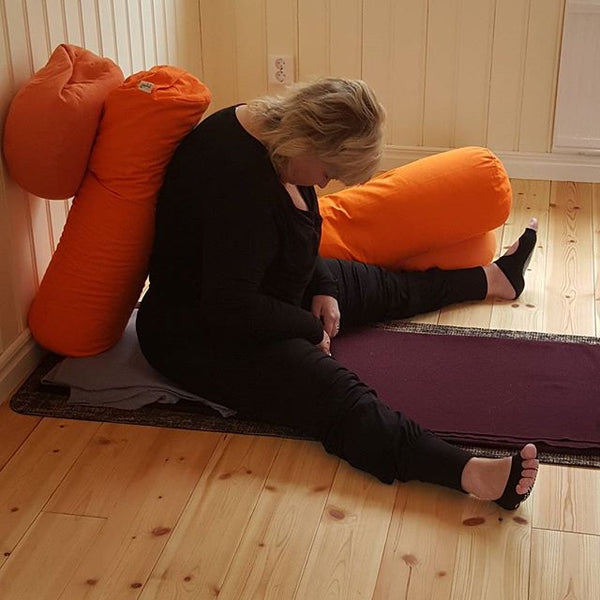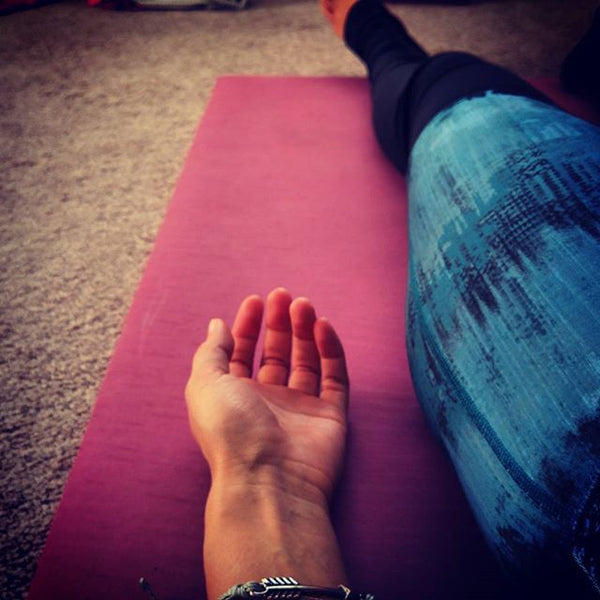12 Reasons Why We Are Obsessed With Dharma Yoga

"I am only here to share my knowledge with others and to help them make rapid progress on the path of yoga." ~ Sri Dharma MittraDharma yoga was founded by Sri Dharma Mittra who was born in Brazil in 1939. Dharma Mittra studied for over 10 years in the early 1960's with his guru, Sri Swami Kailashananda a.k.a. Yogi Gupta. He started teaching yoga in 1967 and opened up the Dharma Yoga New York Center (DYNYC) in 1975 in New York, where he also lives.
Changing Room, Towels, Mats, and Lockers at Dharma Yoga NYC
For those of you who are planning to try out Dharma Yoga NYC studio and wonder what you need to bring and prepare, you are in for a treat! We recently visited the centre and happy to report on our top tips:
1. Are There Any Lockers at Dharma Yoga NYC
There are no lockers, but plenty of cubby holes inside the classrooms so you can put your belongings in the room for safe-keeping. Do remember to switch your phones off to prevent it from disturbing other practitioners though. We know you'll do that anyway. Thank you for your good karma, you good yogi.2. Are there any changing rooms at Dharma Yoga NYC?
Yes! There are two big changing room spaces with coat hangers and extra cubby holes. But you should not keep any valuables in the area because there are no lockers or any ways to lock away your valuables. Also, pro tip - the changing rooms are not very clearly marked between the men's and women's room and they are covered with a big curtain each. When we visited last, the women's area was on the left and men's were on the right. You may want to shout out to double check though. They do have two big bathrooms (clearly marked). If you want to be sure, you can always change inside the bathrooms.
3. What About Shower Facilities? Can I Shower At Dharma Yoga NYC?
Unfortunately, we can't find any shower facilities. You can always bring a small towel and damp it up for a 'festival shower' in the bathroom though.4. Can I rent a mat at Dharma Yoga NYC or I have to bring my own mat
You can do both! A rented mat is $2.00. We used it - they are high-quality Jade mats or similar quality. Pretty clean and it looks like the clean them in between classes.More About Dharma Yoga: What We Love This Fact-Paced, Alignment-Focused Yoga
We recently attended a 3-day Dharma yoga workshop at Mandala Yoga Studio taught by one of Dharma's students, Elena Mouratidou, who had just come back from spending a little under a month at the DYNYC with Dharma.

We noted some notable differences from Dharma yoga to other forms of yoga, i.e. Ashtanga, Jivamukti, etc. We did all the relevant research as well as speaking to some Dharma yoga enthusiasts so that we can give our Lots of Yoga readers the lowdown on Dharma yoga.
12 Need-to-Know Facts About Dharma Yoga
1. Dharma yoga is based on Ahimsa (Non-Violence)
“All living beings fear violence.” ~ Sri Dharma Mittra
Dharma believes in, first of all, accepting your body. Dharma's foundation is Ahimsa (non-violence - think Gandhi) and people get confused and think that Ahimsa has to do mainly with the outside world but Ahimsa should firstly be cultivated within ourselves, i.e. from making sure we are strong and satisfy our needs, to finding our voice and being able to express ourselves. Treating our bodies with love and respect, compassion and perhaps sympathy if we are poorly one day. Thinking non-violent thoughts and change the way we think is the first step. Dharma says that this way we start to see ourselves in all things and when we start to see ourselves in all things, you can't do harm to anyone or anything, because you see everything around you as yourself. Having Ahimsa and compassion for all things and upon this, Dharma is based.
2. Dharma has a "try it even if you fall" approach to poses
“See yourself in the practice you are not able to access right now. Imagine yourself in it.” ~ Sri Dharma Mittra
Dharma believes that you should try a pose, even if it's a hard one, and even if it means that you fall. Dharma rarely suggests to use a wall for assistance with inversions. To those who may think that this contradicts not being violent towards yourself, the Dharma way of thinking is that falling is not treating yourself violently but rather, it prepares you for life. In life we fall and get back up, and this is not violent but realistic. We realise that in life we will fall and may hurt ourselves but we will get up again and be stronger and I will see that all of these yoga lessons are actually lessons for life and for ourselves. To learn an Asana, one may fall, but after 10, 20, or even 100 times, an understanding of where the balance is will be cultivated. In life, we may fall but at some point we will find the balance. Dharma views this as training for life.
3. Dharma doesn’t work with alignment
“Don’t worry. These poses have nothing to do with meditation or enlightenment.” ~ Sri Dharma Mittra
Dharma doesn’t really talk about alignment in his yoga classes. You may find yourself, for instance, in an Ashtanga class where even the little toe needs to be in perfect alignment, but Dharma will just mention the basic things and not all the time. The thinking is that in front of him you can do the deepest post because you are aligned with his energy. "It’s liberating," says Nefeli, a Dharma enthusiast who spent a month in New York attending several of Dharma's classes a day. "You don’t have to think about every little thing being in the perfect alignment. Dharma says copy the teacher physically, then mentally and then psychically. He likes to do the postures and tells students to copy him."

4. The first pose in a class might be an advanced one
“Everything depends on your mental attitude.” ~ Sri Dharma Mittra
As opposed to other yoga classes which tend to start us off with a nice calm modified downward dog, in a Dharma yoga class, the first pose (after the warm-up) could be Kapyasana with Dharma offering modifications for non-advanced students.

Dharma yoga is a practice which is not just a physical practice but rather a path to realisation. "The student may come at first and perform all these fancy poses and can be attracted by this as some of the poses are very advanced," says Elena, "but then you realise that all of these are tools and in reality we do a lot of Pranayama (yogic breathing exercises) and deep Kriya, and 2-3 times a week Dharma Mittra does a one-hour Yoga Nidra (yogic sleep) lesson. Dharma yoga is a complete practice because its base is Patanjali's Ashtanga 8 Limbs of Yoga, so during your 1-2 hour practice you can have all the steps, from the first of the limbs, the Yamas (ethical considerations) to the last, Samadhi (bliss)."
5. There is no standard lesson plan
“Don’t teach too many postures; just the main ones, and hold them for a long time.” ~ Sri Dharma Mittra
During the workshop, Elena got us into Upward Facing Dog and told us to rock back and forth on the toes, saying, “and this is Dharma’s new favourite thing to do in Upward Dog just before Downward Dog". Apparently, Dharma changes the sun salutations according to his mood and doesn't have a standard series in every lesson like Ashtanga or Bikram. We were also informed that at this point in time, he does not incorporate sun salutations into his lessons. "He changes the lessons," says Elena. "It’s never the same. The essence is still the same, of course. It’s how he connects to the students and what he wants to give them at that time and I feel it each time. He might be teaching a sun salutation but in reality he is transmitting to see if you are open; he is doing something much deeper at that moment." As for a traditional Dharma series, there is Dharma 1 and Dharma 2 which are for beginners, Dharma 3 and Dharma 4 for more advanced students and Dharma Gentle which is a restorative practice allowing you to spend more time in meditation and Pranayama. When you see yourself getting into difficult poses, it’s easy for the ego to get ahead of itself and Dharma is known for being able to bring people down to earth. Dharma believes that every pose is an offering. Here is a video where he explains the true purpose of Asana.
6. Dharma teaches a different arm positioning in Pincha Mayurasana (Peacock Pose)
“If you get bored of doing it with two hands, try it with one.” - Sri Dharma Mittra
Traditionally in Pincha Mayurasana, the arms should be shoulder width apart and parallel from each other. Dharma suggests putting the hands together so that they meet, just as you would in headstand. He knows that most teachers teach the traditional way but he believes that with the hands together, one is able to stay in the pose for a longer time.

Sri Dharma Mittra in a Pincha Mayurasana (Peacock Pose) variation via Yoga Vibes
7. There is no rest day (per se)
“Move your joints every day. You have to find your own tricks. Bury your mind deep in your heart, and watch the body move by itself.” ~ Sri Dharma Mittra
Practice isn’t six days a week as with other yoga styles; it's every day. As Dharma believes that practice is also off the mat, Dharma yoga is a constant practice, so for someone it could mean getting on the mat every day, and for others it could mean practicing mindfulness and meditation every day with less of the physical side. Sunday is not a rest day; in fact, he there is a class at the DYNYC which he sometimes teaches.
8. The importance of Meditation
“Every time you have a chance, go within and do your meditation.” ~ Sri Dharma Mittra
Dharma stresses the importance of meditation. He says that it’s fine for someone to skip their Asana practice for one day but to never skip their meditation. He suggests at least 10 minutes of meditation in the morning and 10 minutes in the evening before bed, every day. Meditation is also incorporated in an Asana lesson which could sometimes be slap bang in the middle of it. Dharma uses asana as a tool so the inward awareness is present throughout the whole of the lesson, to reminds you that your mind is on the here and now. Dharma is not only interested in having people who know a lot of poses but he likes to have practitioners with awareness. He doesn’t always mention the name of the Chakras but he concentrates a lot on the spiritual heart saying that the best gift he received from his guru was showing him how to find the way to his spiritual heart. Also, he is big on Chakra vibration cleansing. Dharma meditation tips: Thinking of the breath is a nice easy and simple meditation technique. He doesn’t use fancy meditation techniques with visualisations of many different symbols. Concentration on the breath is the simplest meditation and another nice simple one is concentration on the light in Ajna Chakra (between the eyebrows). The main thing is to keep it simple and to do it.

9. Dharma loves the Iyengar Pranayama method
"Some Yogis consider Pranayama to be the most important practice." - Sri Dharma Mittra
Dharma Mittra was inspired by BKS Iyengar's Pranayama technique and has incorporated this into his teaching. You can read more about Iyengar's Pranayama method here.
10. Dharma advocates Veganism
“Animals are our inferior brothers and sisters. They are not meant to be eaten, but must be treated with love.” Sri Dharma Mittra
Sri Dharma Mittra is a big advocate for veganism and vegetarianism. He won't demand students to go meat-free but he will mention it in all lessons and often states how he hasn’t touched animal products for many years and has survived just fine. He’ll also joke about there being "a lovely vegan food place just under the studio," to try to get his students to convert.
11. Dharma is psychic!
"Raising psychic forces (Kundalini) without keeping the Ethical Rules can be unsafe like taking drugs." - Sri Dharma Mittra
For many years, Dharma practiced, developed and mastered the Psychic Development Technique (PDT) which is a method of being able to protect oneself from psychic attacks, or (less scarily) negative energy, through meditation, helping to build a protective aura. He taught this for a long time in the DYNYC but he has since stopped and this is now being taught by other senior Dharma teachers. In the last stage of PDT, you can meditate and concentrate on something that you want in detail and make it come about (kind of like the law of attraction).
12. Dharma likes to talk and he has a sense of humour
"[Standing Tittibhasana (Firefly Pose)] is the only advanced pose I know that you can run away from the police in.” – Sri Dharma Mittra
Unlike some other Gurus who demand respect and worship, Dharma Mittra is very down to earth and likes to do things by himself. He talks about the modern world and helps students blend everyday life with yogi life. He is also renowned for his cheeky sense of humour. You definitely have to leave your ego at the door before entering a Dharma yoga class.

So just what is it about Dharma yoga that makes it so special and well-loved? Andrei Ram, one of Dharma Mittra’s original students who used to teach at the DYNYC, says, “Dharma is a Karma washing machine”. “For me, it’s a complete practice,” says Elena Mouratidou. “It has chanting, Kriya (purification techniques), meditation, dynamic Asana (yoga poses), restorative Asana and it’s a path to self-realisation. It’s a very holistic practice and nothing is missing from it. The most important thing is that it has my teacher, Dharma, who is an enlightened being so to be around him and with his energy, even sitting with him, doing nothing, opens you up a lot because it’s amazing to practice with a real yogi, a real guru, someone who is already there, and he shows you the way. So to see this human being move and teach and transmit the knowledge is the meaning of the whole practice. Seeing that he has devoted his whole life to that, to do Karma yoga, selfless service 24-hours a day. Imagine, Dharma is 76 and he teaches three classes a day, every day. This is an inspiration for me and is the big difference. And he is alive! And he lives in New York. So he is a real guru but he lives in our civilisation, he knows what the cell phone is and what HDTV is. He’s like us but on a different level.”
Dharma Yoga Sequence
Fun fact (taken from the Dharma website): At age 45, Sri Dharma Mittra photographed himself in 1,350 postures as an act of devotion to his Guru, Yogi Gupta. 908 of these photos were used to create the Master Yoga Chart and 608 were published in his book: Asanas.

The Master Yoga Chart
You can learn more about the very interesting life of Sri Dharma Mittra and more fun facts from Dharma Yoga's official website. If you are interested in Dharma yoga, and would like to practice, here’s what you can do:
1. Practice at home
There are Dharma DVDs which you can find here for beginners and for advanced students alike, with Dharma himself demonstrating the series.
You can find more videos on the Dharma Youtube channel.
2. Practice at a registered Dharma yoga teacher
Find a registered teacher near you.
3. Go to the Dharma Yoga Center in New York and practice with the man himself
Dharma Mittra teaches three classes a day every day so to go and stay with him for a month is the best training for any Dharma enthusiast. There are other teachers who teach there also but Dharma is the main teacher. Students of Dharma claim that the best training is to go and be with him. If you are interested in becoming a certified Dharma yoga teacher, they now have 200-hour, 500-hour and 800-hour Yoga Alliance teacher training courses.
Send us your views, opinions and experiences with Dharma yoga. How do you like it? Do you find it different from other forms of yoga? We'd love to hear from you.
Follow us for more free, high-quality yoga and mindfulness content... and subscribe to our mailing list below!
Don't forget to connect with us on social media (Facebook, Twitter, Instagram, Pinterest and Tumblr).





